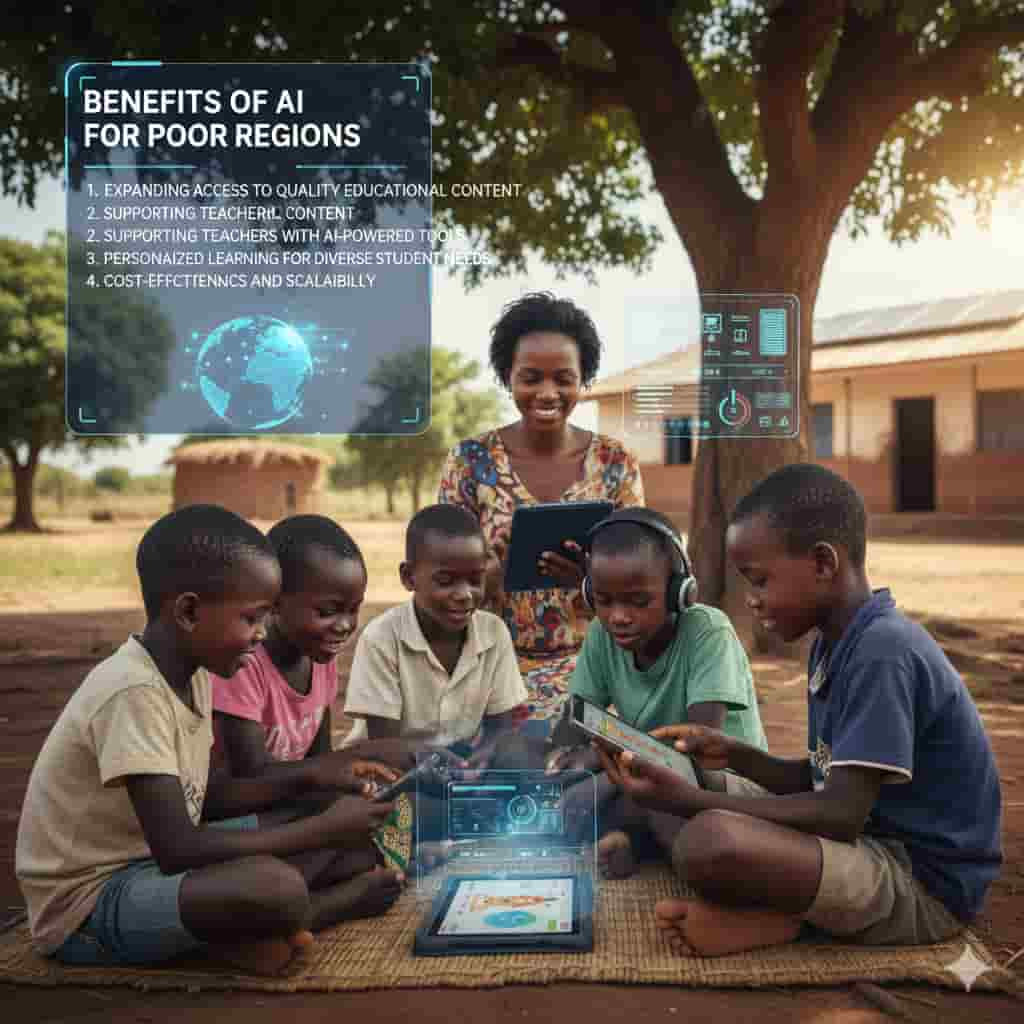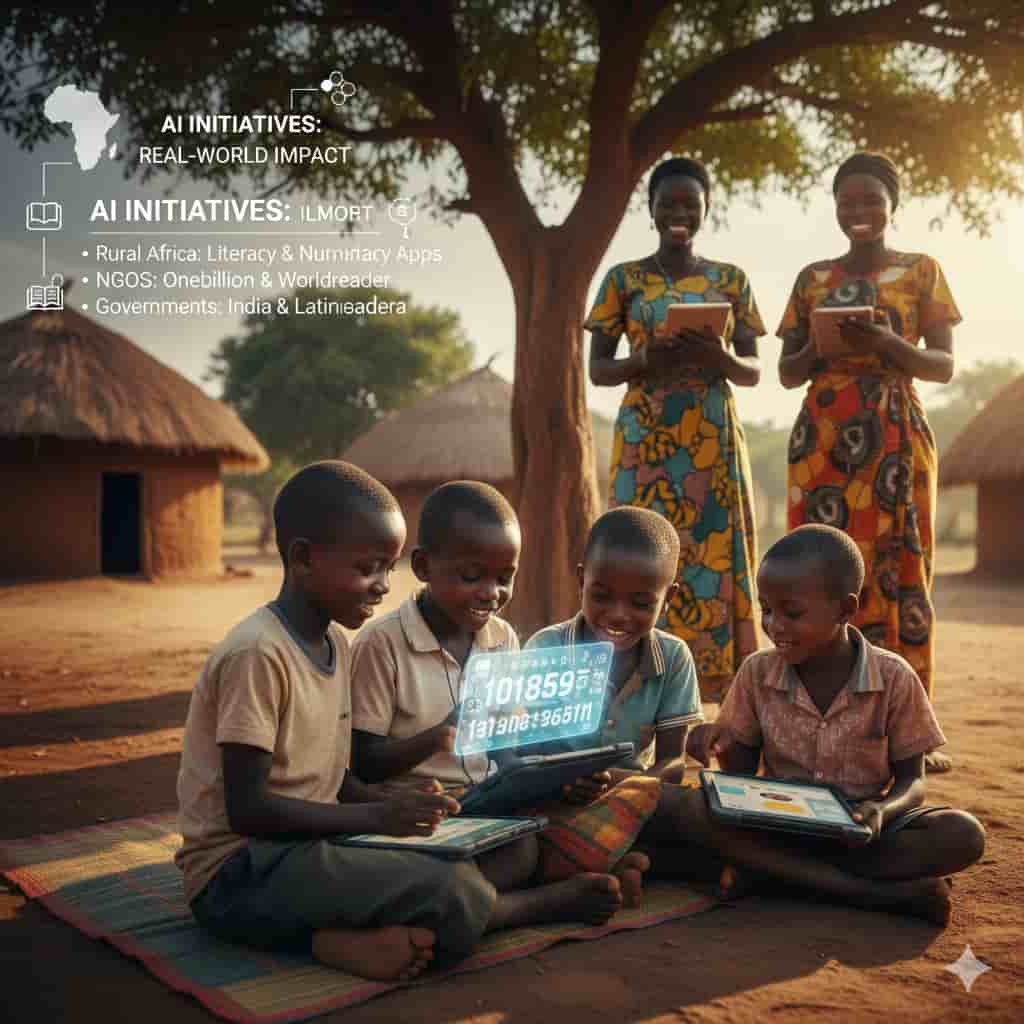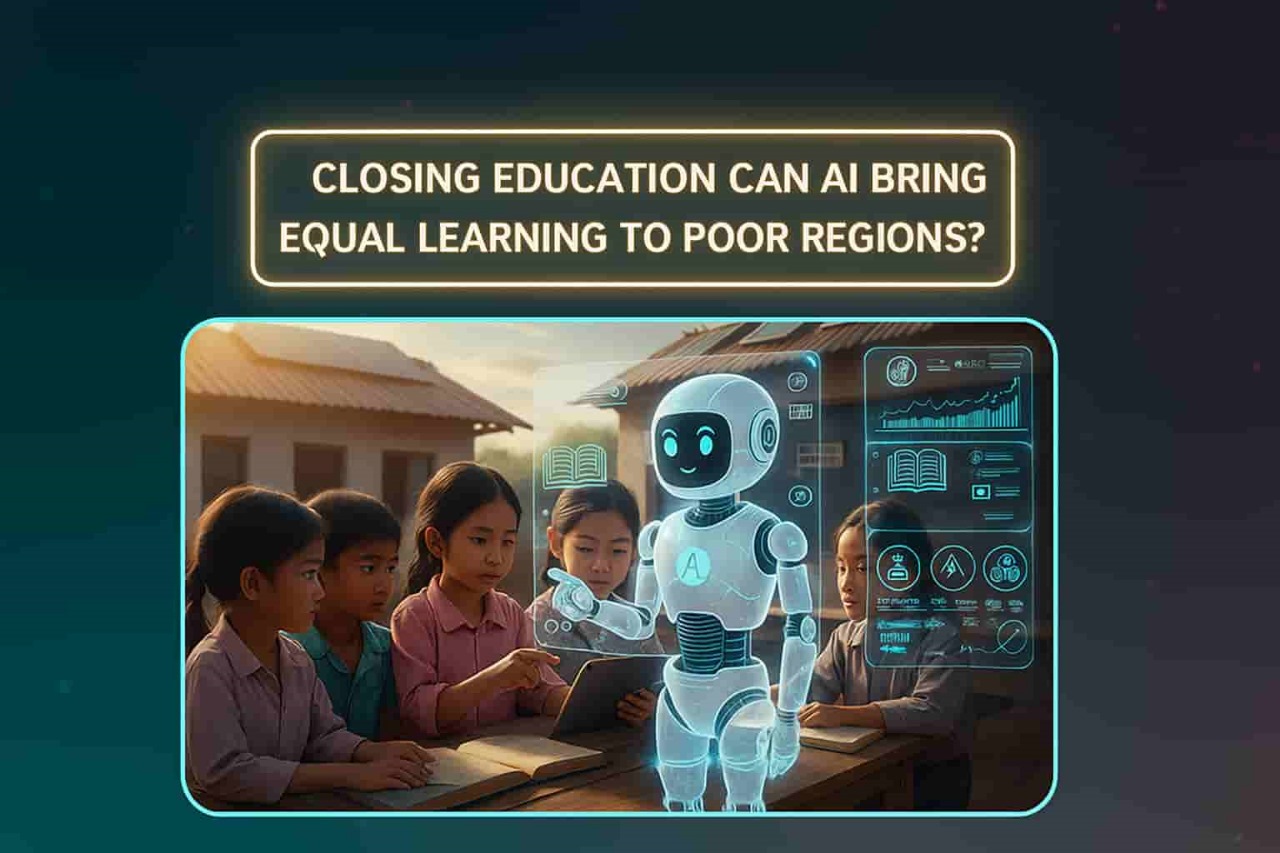1. Closing Education Gap
One of the most pressing issues facing the world today is closing the educational gap. Millions of children in underdeveloped areas continue to lack access to high-quality educators, educational resources, and schools. Given how quickly technology is developing, the key question is whether artificial intelligence (AI) will be the game-changer we need to close the achievement gap.
2. What is the Education Gap?
Understanding the issue at hand is the first step towards closing the educational gap. The unequal distribution of learning opportunities and outcomes among students from diverse backgrounds is known as the “education gap.” Students in affluent areas frequently deal with out-of-date textbooks, packed classrooms, or no schools at all, whereas children in affluent communities enjoy the advantages of contemporary schools, cutting-edge resources, and highly qualified teachers.
There are a number of reasons for this divide. The biggest obstacle is poverty, which prevents kids from having access to digital gadgets, wholesome food, books, or safe transportation. The distance is increased by infrastructure issues such as unstable electricity, poor internet, and dangerous school buildings. One teacher may have to teach multiple grades at once due to a lack of qualified teachers.
Classrooms are not the only places affected. Children who don’t receive the right education find it difficult to find steady employment, enhance their living circumstances, or make meaningful contributions to society.
Wide educational gaps are frequently associated with weaker social structures, greater inequality, and slower economic growth.
Reducing the educational gap is crucial for sustainable development and goes beyond simple equity. Societies can break poverty cycles, uncover hidden talent, and boost economies by reducing disparities. AI is therefore viewed as a potential game-changer in this endeavor, which has made closing the educational gap a global priority.
3. What Role Can AI Play in Education?
Education is not an exception to how artificial intelligence is already changing industries. AI provides strong tools for closing the education gap that improve scalability, accessibility, and personalization—essential components lacking in many underdeveloped areas.
Personalized learning is one of AI’s functions. Many students are taught the same lesson in traditional classrooms, leaving some behind while others advance. On the other hand, AI-powered platforms adjust content and pace in real time to each learner’s strengths and weaknesses. This guarantees that no child is left behind, which is essential for bridging the educational divide.
Education is not an exception to how artificial intelligence is already changing industries. AI provides strong tools for closing the education gap that improve scalability, accessibility, and personalization—essential components lacking in many underdeveloped areas.
Personalized learning is one of AI’s functions. Many students are taught the same lesson in traditional classrooms, leaving some behind while others advance. On the other hand, AI-powered platforms adjust content and pace in real time to each learner’s strengths and weaknesses. This guarantees that no child is left behind, which is essential for bridging the educational divide.
Teachers gain as well. AI lessens administrative workloads by automating performance tracking, attendance, and grading. This frees up teachers’ time for coaching, mentoring, and developing human relationships with students—all crucial components of closing the educational gap that technology cannot replicate.
In other words, AI is meant to supplement teachers, not to replace them. AI has the potential to be a key factor in reducing the global education gap by offering scalable, individualized, and accessible solutions.
4. Benefits of AI for Poor Regions
4.1 Expanding access to quality educational content
AI platforms can store vast libraries of lessons, stories, and exercises. Children in poor villages who never had textbooks can now learn using smartphones or tablets. Many platforms are designed to run offline, making them perfect for closing education gap where internet access is weak.
4.2 Supporting teachers with AI-powered tools
In poor regions, one teacher may be responsible for an entire school. AI tools help by grading assignments, generating progress reports, and offering teaching strategies. With less time spent on paperwork, teachers can focus on meaningful classroom interaction—helping close the education gap more effectively.
4.3 Personalized learning for diverse student needs
Every child learns differently. AI can track progress, spot gaps, and adjust lessons in real time. A student struggling with reading receives extra support, while another excelling in science can be challenged further. This flexibility is crucial for closing education gap among students with diverse needs.
4.4 Cost-effectiveness and scalability
Traditional education requires large investments in buildings, books, and teachers. Once developed, AI solutions can be distributed cheaply to thousands of learners. This makes them highly scalable and affordable for poor regions—making closing education gap more realistic than ever before.

5. Challenges of Using AI in Poor Regions
5.1 Lack of infrastructure and connectivity
AI tools rely on electricity, internet, and devices. Many rural areas lack these basics. Without creative solutions like solar-powered tablets, closing education gap with AI will remain difficult.
5.2 Limited digital literacy
Teachers and students need training to use new technologies. In many poor regions, even basic computer skills are missing. Building digital literacy is a necessary step toward closing education gap with AI.
5.3 High costs of initial deployment
Although AI becomes cost-effective at scale, the upfront costs of devices, training, and connectivity are high. Governments and NGOs must invest strategically to ensure closing education gap doesn’t stall due to financial barriers.
5.4 Risks of bias and cultural misalignment
AI systems are often designed in wealthy countries. If content ignores local cultures, traditions, or languages, it risks alienating learners. Adapting content to local needs is essential for closing education gap fairly and inclusively.
Read more: AI and education in crisis contexts: Bridging gaps and creating …
6. How to Implement AI Solutions Effectively
6.1 Building affordable, localized infrastructure
Solar-powered tablets, offline apps, and shared digital hubs can make AI accessible even in villages. These solutions create the foundation for closing education gap in remote communities.
6.2 Partnerships with NGOs, governments, and tech companies
Collaboration is key. NGOs provide grassroots knowledge, governments set supportive policies, and tech companies supply tools. Together, they form strong networks for closing education gap with AI.
6.3 Teacher training and capacity building
Teachers are central to any solution. Training them to use AI tools empowers classrooms. Skilled teachers supported by AI become powerful drivers of closing education gap.
6.4 Inclusive, culturally relevant AI content
To resonate, AI must reflect students’ daily lives. Apps teaching math with farming or local market examples feel more relatable. Creating such content is vital for closing education gap across diverse communities.
6.5 Monitoring and evaluation
AI solutions must be tested and improved continuously. Tracking student performance and teacher feedback ensures programs remain effective. Monitoring guarantees that investments in closing education gap deliver real results over time.
Read more: Bridging education gaps & safeguarding students in the age of…
7. Case Studies and Real-World Examples
With just 30 minutes of daily use, AI-powered learning applications are helping kids in rural Africa become more literate and numerate. These offline-compatible apps offer interactive lessons that help close the educational gap in underprivileged schools.
NGOs are also setting the standard. Tablets with AI content preloaded in local languages are distributed by initiatives like “Onebillion.” Similarly, “Worldreader” introduces digital books to kids through AI-powered reading applications. These programs are doable steps toward bridging the educational divide in areas with limited access to traditional resources.
Governments are also experimenting. In India, AI chatbots assist teachers with lesson planning and after-school tutoring. In Latin America, pilot projects use AI to monitor attendance and flag at-risk students. These innovations prove that AI, when localized, can be a driving force in closing education gap.

8. Future Outlook: Can AI Truly Close the Gap?
AI in education has a bright future, but it needs to be balanced. AI offers cost-effectiveness, accessibility, and personalization, on the one hand. However, it cannot take the place of human connections or teachers. The best way to close the education gap is to combine human care with technology.
AI will probably spread throughout underdeveloped areas as devices get more affordable and connectivity gets better. The goal of closing the educational gap may become a reality if governments, non-governmental organizations, and tech companies work together.
The long-term goal is unambiguous: all children should have access to educational opportunities, regardless of where they were born. Although AI won’t be able to solve every problem, it is one of the best tools for bridging the educational divide for future generations.
Read more: Is AI Grading Fair and Unbiased? Best Insight 2025
9. Frequently Asked Questions
1. Can AI replace teachers in poor regions?
No. AI supports teachers but cannot replace human guidance. Teachers are essential in closing education gap through mentoring and inspiration.
2. How affordable is AI-based education?
It is costly at first, but once scaled, AI becomes highly cost-effective—making closing education gap possible even in resource-limited countries.
3. What infrastructure is needed?
Reliable electricity, internet, and devices are essential. Offline tools can also help in closing education gap where connectivity is weak.
4. How does AI help diverse learning needs?
AI adapts lessons to each student’s pace, ensuring no child is left behind. This personalization is key to closing education gap.
5. Are AI tools culturally adaptable?
Yes, when designed locally. Adapting tools to reflect culture and language is necessary for closing education gap inclusively.
6. What role do governments and NGOs play?
They provide funding, training, and support—building the systems needed for closing education gap with AI.
7. How can AI avoid bias?
By using diverse data and constant evaluation, AI can remain fair. This protects progress in closing education gap.
8. What are the risks of over-relying on AI?
Too much reliance could reduce human interaction. Balance ensures AI strengthens rather than weakens efforts in closing education gap.


1 thought on “Closing Education Gap Best in 2025”